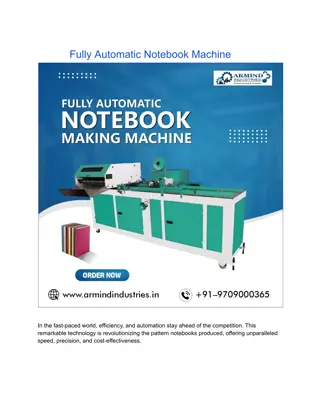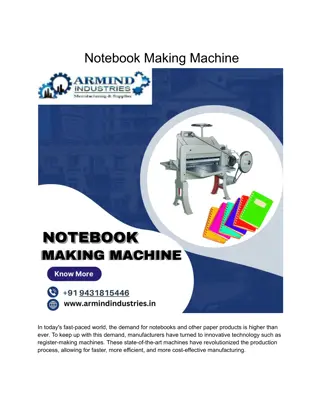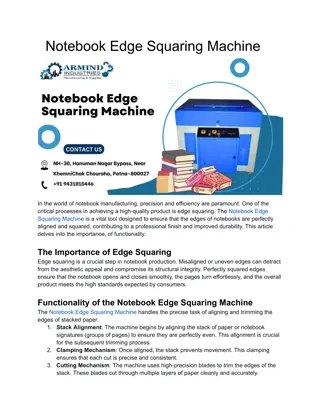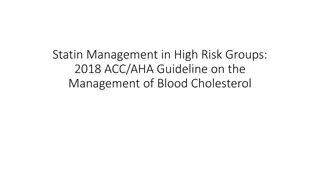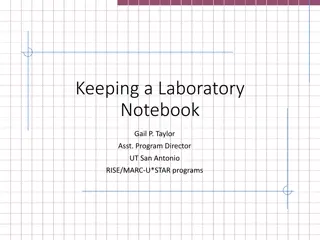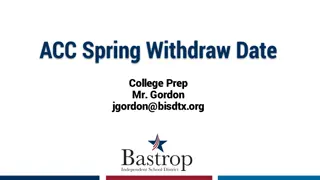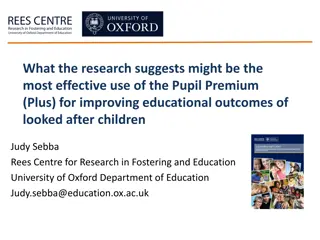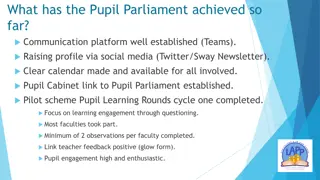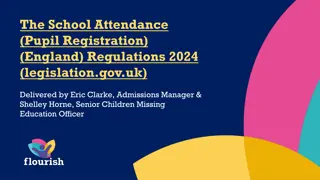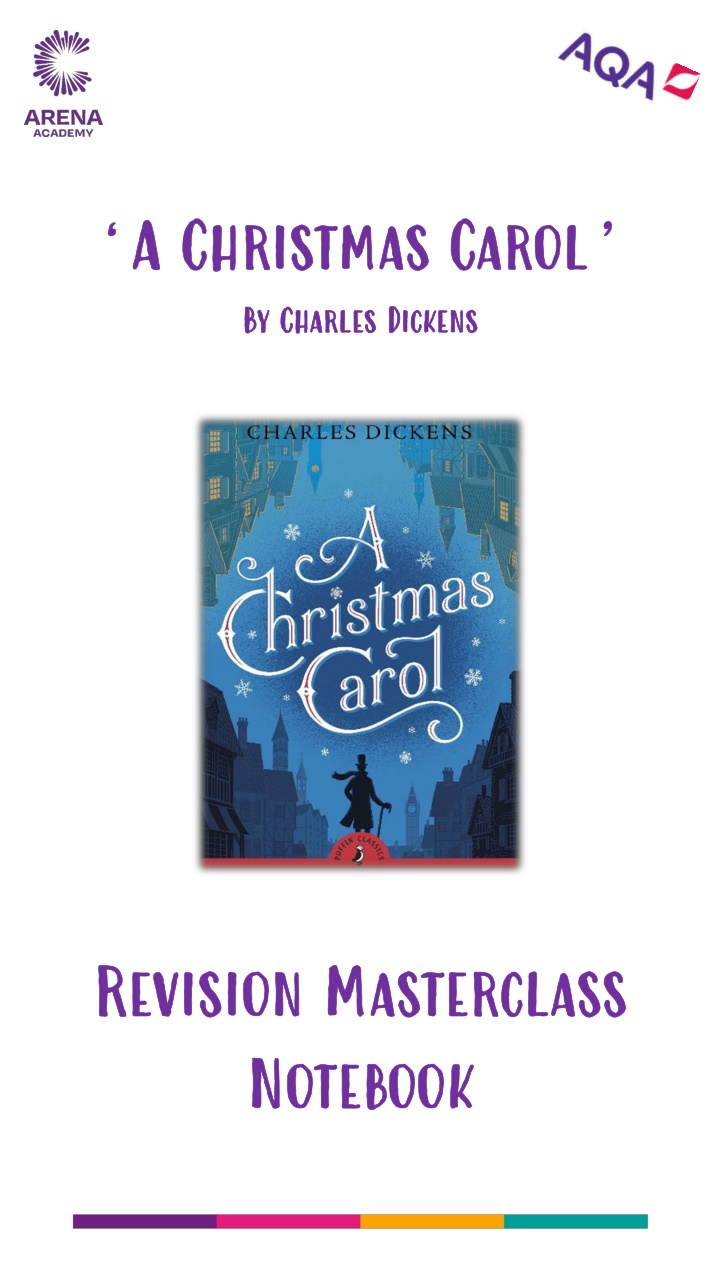
Christmas Carol by Charles Dickens Masterclass Notebook
"Enhance your understanding of 'A Christmas Carol' by Charles Dickens with this comprehensive masterclass notebook. Explore Scrooge's transformation, plot analysis, key characters, and historical context in this engaging study resource."
Download Presentation

Please find below an Image/Link to download the presentation.
The content on the website is provided AS IS for your information and personal use only. It may not be sold, licensed, or shared on other websites without obtaining consent from the author. If you encounter any issues during the download, it is possible that the publisher has removed the file from their server.
You are allowed to download the files provided on this website for personal or commercial use, subject to the condition that they are used lawfully. All files are the property of their respective owners.
The content on the website is provided AS IS for your information and personal use only. It may not be sold, licensed, or shared on other websites without obtaining consent from the author.
E N D
Presentation Transcript
A Christmas Carol By Charles Dickens Revision Masterclass Notebook
Do Now: Retrieval Practise on Scrooge TASK: In pairs or groups, answer each of the questions below from the retrieval pyramid about Scrooge s transformation. Row 1 Notes Row 2 Notes Row 3 Notes
The Plot (AO1) & Context (AO3) TASK: Complete the summary boxes for each stave below. Then, mind map what you know about each AO3 context heading. Stave One Stave Two Stave Three Stave Four Stave Five Key Terms The Poor Law Society & Education Christmas & Family Malthus
Knowledge Organiser Characters Author Dickens Scrooge Main character Miserly, mean, bitter, materialistic, unsympathetic, cold, selfish, isolated > Transformed to > charitable, generous, happy. 1 Dickens father was sent to jail for debt and Dickens had to give up his education until his father inherits some money and he goes to school. 2 Dickens was put to work in a warehouse, pasting labels on bottles. He had first hand experience of poverty. Bob Cratchit Bob represents the lower classes and the loving father that we see Scrooge never had. He has an unyielding Christmas spirit and is grateful. 3 Dickens became a writer of fiction and journalism and worked for radical newspapers on his disillusionment with politics and the class system. Tiny Tim Tiny Tim personifies the severe consequences of living in poverty, frail and ill. He is an optimistic, compassionate, religious, and generous child. Key Concepts and Context Thomas Malthus In 1798, the economist Thomas Malthus wrote that human population would always grow faster than food supplies. This would mean that overpopulation would lead to many people, usually the poor, dying due to famine. For Malthus, poverty was the inevitable result of overpopulation because the worst-off in society would get less and less. Fred Warm-hearted, determined, forgiving, caring. Scrooge s nephew and only living family. Juxtaposes Scrooge at the start of the novella. Marley (ghost) Haunting, reformed, regretful. Marley is weighed down with chains and baggage, symbolising his greed and negligence of the lower classes. He scares Scrooge and shows him the horror of not being able to help others. Dickens view Dickens believed that Malthus was wrong and there was plenty of food to go around but only if the rich were more generous. He thought it was wrong that the poor should suffer because the rich were too selfish to share their wealth. The Ghost of Christmas Past Shows Scrooge his past (isolated at school, his sister, Fezziwig, Belle). The ghost appears as a strange figure an old man and a child combined. Allegory A story, poem, or picture that can be interpreted to reveal a hidden meaning, typically a moral or political one. Dickens is criticising the rich for being ignorant of the poor. The Ghost of Christmas Present Compassionate, generous, cheerful, illustrates what life is like for different people in Victorian Britain at Christmas. He personifies generosity, both spiritual and material. Poor Law 1834 Poor Law Amendment Act. Led to a cut in aid given to poor people. Workhouses were created which poor people would have to live and work in. There was a high chance of disease and death. The Ghost of Christmas Yet to Come Mysterious, silent, intimidating. It shows Scrooge what will happen if he doesn t change his ways. Personifies death which is inevitable for all humans. ACC December 1843 Dickens writes A Christmas Carol focusing on how many of society s ills can be blamed on greed for money and status as a response to a government report on the abuse of child labourers in mines and factories, Dickens vowed he would strike a sledge-hammer blow . . . on behalf of the Poor Man s Child. Belle Scrooge s ex-fianc that left him (Stave 2) Fezziwig Scrooge s old boss generous, kind (Stave 2)
Exam Technique Starting with this extract, how does Dickens show the transformation of Scrooge s character in A Christmas Carol? "Hallo," growled Scrooge, in his accustomed voice, as near as he could feign it. "What do you mean by coming here at this time of day?" "I'm very sorry, sir," said Bob. "I am behind my time." "You are?" repeated Scrooge. "Yes. I think you are. Step this way, if you please." "It's only once a year, sir," pleaded Bob, appearing from the Tank. "It shall not be repeated. I was making rather merry yesterday, sir." "Now, I'll tell you what, my friend," said Scrooge, "I am not going to stand this sort of thing any longer. And therefore," he continued, leaping from his stool, and giving Bob such a dig in the waistcoat that he staggered back into the Tank again; "and therefore I am about to raise your salary." Bob trembled, and got a little nearer to the ruler. He had a momentary idea of knocking Scrooge down with it, holding him, and calling to the people in the court for help and a strait-waistcoat. "A merry Christmas, Bob," said Scrooge, with an earnestness that could not be mistaken, as he clapped him on the back. "A merrier Christmas, Bob, my good fellow, than I have given you for many a year. I'll raise your salary, and endeavour to assist your struggling family, and we will discuss your affairs this very afternoon, over a Christmas bowl of smoking bishop, Bob. Make up the fires, and buy another coal scuttle before you dot another i, Bob Cratchit!" Scrooge was better than his word. He did it all, and infinitely more; and to Tiny Tim, who did not die, he was a second father. He became as good a friend, as good a master, and as good a man, as the good old city knew, or any other good old city, town, or borough, in the good old world. Some people laughed to see the alteration in him, but he let them laugh, and little heeded them; for he was wise enough to know that nothing ever happened on this globe, for good, at which some people did not have their fill of laughter in the outset; and knowing that such as these would be blind anyway, he thought it quite as well that they should wrinkle up their eyes in grins, as have the malady in less attractive forms. His own heart laughed: and that was quite enough for him. He had no further intercourse with Spirits, but lived upon the Total Abstinence Principle, ever afterwards; and it was always said of him, that he knew how to keep Christmas well, if any man alive possessed the knowledge. May that be truly said of us, and all of us! And so, as Tiny Tim observed, God Bless Us, Every One! Ideas
Model In Charles Dickens political diatribe A Christmas Carol , the transformation of Scrooge is presented through Scrooge s own social responsibility, his attitude to both poverty and family and how this juxtaposes from the beginning of the novella compared to the end. Dickens uses references to people of higher social status like the economist Thomas Malthus Scrooge as a metaphorical capitalist symbol to criticise the lack of welfare support through the Poor Law Amendment of 1834 for the poor within Victorian society. Meanwhile, acting also as a redemption story, Dickens, presents empathy for Scrooge to not only foreshadow the transformation of Scrooge, but also the future transformation of all Victorians and people alike. Scrooge is presented as a misanthropic and selfish character who lacks social responsibility. In Stave One of the novella, we see this through Scrooge s violent statement, boiled with his own pudding and buried with a stake of holly. The use of violent imagery coupled with dark humour creates a paradox: to represent Scrooge as a capitalist miser who dislikes charity, but also presents some hope of transformation. This is evident in the warped semantic field of Christmas attached to violent verbs such as the plosives boiled and buried to further isolate Scrooge from the rest of society. Furthermore, Dickens also uses political satire to directly reference Thomas Malthus as Dickens intends to campaign for Scrooge s own change. Scrooge s announcement, through the use of quantifiers, that there should be a decrease [in] the surplus population is a reference to the ideologies of Malthus and how he believed that the growing population would outgrow the food supply. Also, by using syntactical parallelism, it is ironically foreshadowed how the Ghost of Christmas Past will return this phrase to Scrooge after his empathetic realisation towards the Cratchit family in Stave Three, emphasising how Scrooge has the capacity for moral transformation and redemption. Dickens also uses a lexical field of greed and isolation in Stave One to suggest the everlasting and continuous cycle of Scrooge s rotten personality as he is described as a covetous, old sinner. Indeed, the use of a syndetic listing here creates a narrative that he represents the opposite or antonym of generous in every way imaginable, further supported by a squeezing, wrenching, grasping, scraping, clutching . Dickens emphasises own Scrooge s features by relating the protagonist to the tactile imagery of the Victorian Industrial Revolution to represent his lack of moral and physical advancement. Dickens uses asyndetic listing to suggest his own ongoing and continuous metaphorical chain which he develops as a result of his own immoral sins and wrongdoings as warned by the arrival of Marley s Ghost.
You Do: Answering the Question ____________________________________________________________________________________ ____________________________________________________________________________________ ____________________________________________________________________________________ ____________________________________________________________________________________ ____________________________________________________________________________________ ____________________________________________________________________________________ ____________________________________________________________________________________ ____________________________________________________________________________________ ____________________________________________________________________________________ ____________________________________________________________________________________ ____________________________________________________________________________________ ____________________________________________________________________________________ ____________________________________________________________________________________ ____________________________________________________________________________________ ____________________________________________________________________________________ ____________________________________________________________________________________ ____________________________________________________________________________________ ____________________________________________________________________________________ ____________________________________________________________________________________ ____________________________________________________________________________________ ____________________________________________________________________________________ ____________________________________________________________________________________ ____________________________________________________________________________________ ____________________________________________________________________________________ ____________________________________________________________________________________ ____________________________________________________________________________________ ____________________________________________________________________________________ ____________________________________________________________________________________ ____________________________________________________________________________________ ____________________________________________________________________________________ ____________________________________________________________________________________ ____________________________________________________________________________________ ____________________________________________________________________________________ ____________________________________________________________________________________ ____________________________________________________________________________________ ____________________________________________________________________________________ ____________________________________________________________________________________ ____________________________________________________________________________________ ____________________________________________________________________________________ ____________________________________________________________________________________ ____________________________________________________________________________________ ____________________________________________________________________________________ ____________________________________________________________________________________ ____________________________________________________________________________________ ____________________________________________________________________________________ ____________________________________________________________________________________ ____________________________________________________________________________________ ____________________________________________________________________________________ ____________________________________________________________________________________ ____________________________________________________________________________________ ____________________________________________________________________________________ ____________________________________________________________________________________ ____________________________________________________________________________________ ____________________________________________________________________________________



